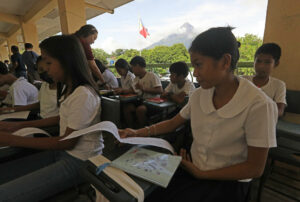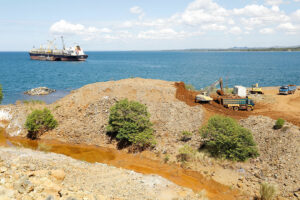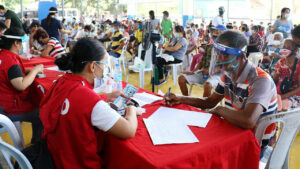PHL seeks $500-M WB loan for safer school infrastructure

THE PHILIPPINES is seeking a $500-million loan from the World Bank (WB) to support the rehabilitation of schools affected by natural calamities such as typhoons and earthquakes, as well as strengthen their disaster preparedness.
The proposed Infrastructure for Safer and Resilient Schools project will address the physical rehabilitation needs and boost the resilience of disaster-affected schools in the Philippines, according to a loan document uploaded on the World Bank website.
“It will address the need for recovering affected school infrastructure, which has been impacted mostly by multiple tropical cyclones and earthquakes between 2021 and 2023. This will contribute towards overcoming the problem of learners attending schools in poor physical conditions, including temporary learning spaces,” it said.
The project costs $501.25, according to the World Bank. Its board is expected to take up the loan proposal at its meeting on May 30, 2024.
The project is expected to cover over 3,000 schools mainly in Caraga, Cordillera Administrative Region, and Regions III, V, VI, VII, VIII, and XI. It will be implemented by the Department of Education (DepEd) and Department of Public Works and Highways (DPWH).
The Philippines is one of the most disaster-prone countries in the world. About 20 cyclones enter the country every year.
From 2021 to 2023, there were 3,484 school facilities affected by disasters nationwide, data from DepEd showed.
Data also showed that there are 7,250 schools located in high seismic zones; 8,000 near rivers; 5,000 by coastlines; and 1,200 on islands.
The project will focus on investments for the recovery of disaster-struck school infrastructure; project management and monitoring to ensure effective implementation; and an ex-ante financing mechanism for emergencies, according to the loan document.
“The proposed project will support the integration of vulnerability reduction criteria into rehabilitation designs so that rehabilitated school buildings will have an enhanced performance in the face of future hazard events. To do so, the proposed project will support a damage and vulnerability assessment of affected school facilities,” it added.
It also aims to address the low attendance of students due to the poor physical conditions of schools.
The Philippines’ active official development assistance (ODA) portfolio had inched up by 0.5% to $32.4 billion as of end-2022, according to the National Economic and Development Authority (NEDA).
“This comprised of 106 loans amounting to $30.2 billion and 320 grants totaling $2.2 billion. These loans and grants were provided by 20 development partners and implemented by 84 government agencies,” NEDA said in its ODA 2022 Portfolio Review.
Meanwhile, overall loan disbursements stood at $4.82 billion as of end-2022, lower than $5.52 billion at end-2021.
“For project loans alone, the actual disbursements reached $2.21 billion, reflecting a slight increase of $54 million compared with the disbursements in 2021,” NEDA said.
“Considering drawdowns from previous years, the cumulative disbursements of active loans amounted to $15.84 billion, representing 52% of the total net commitment of $30.2 billion in 2022,” it added.
By source, the Asian Development Bank (ADB) was the country’s top provider of ODA in the Philippines. This accounted for 33.47% of the total portfolio, equivalent to $10.85 billion.
The NEDA noted that the ADB surpassed Japan as the leading source of ODA last year, which “held the top position for the preceding seven consecutive years.”
Japan accounted for 30.75% of the total portfolio or $9.96 billion, followed by the World Bank ($6.86 billion), China ($980 million), and South Korea ($910 million). — Luisa Maria Jacinta C. Jocson




